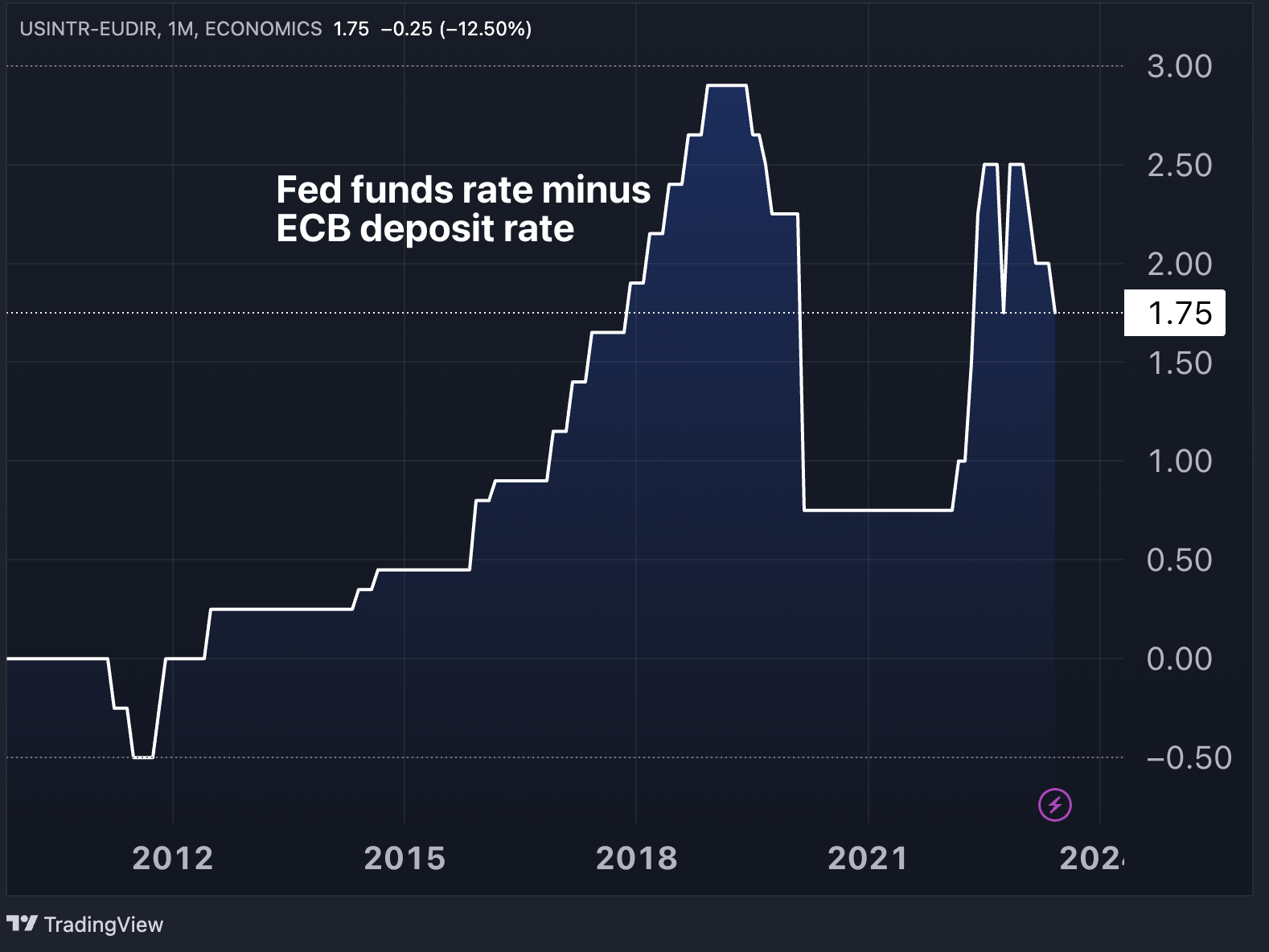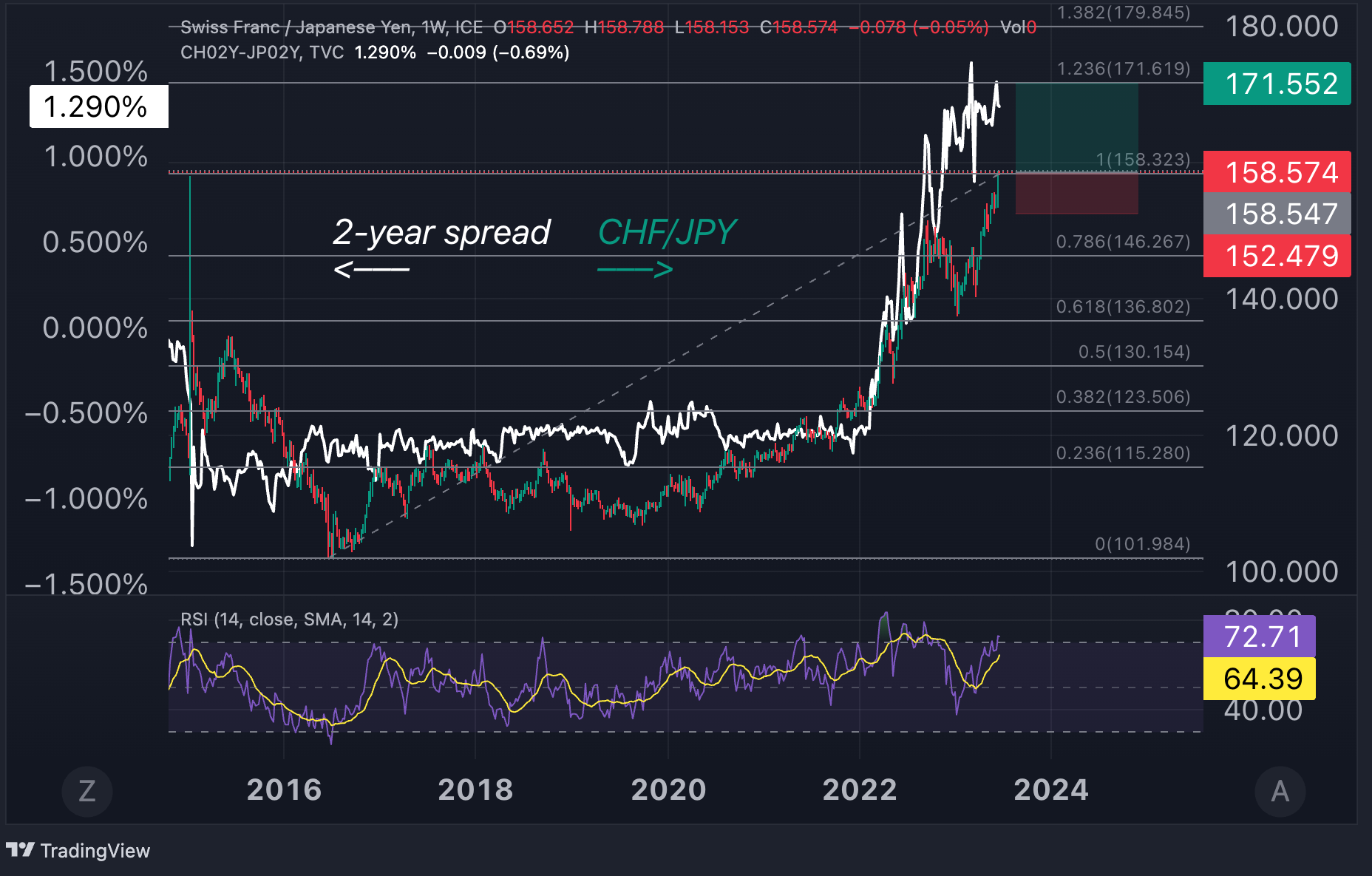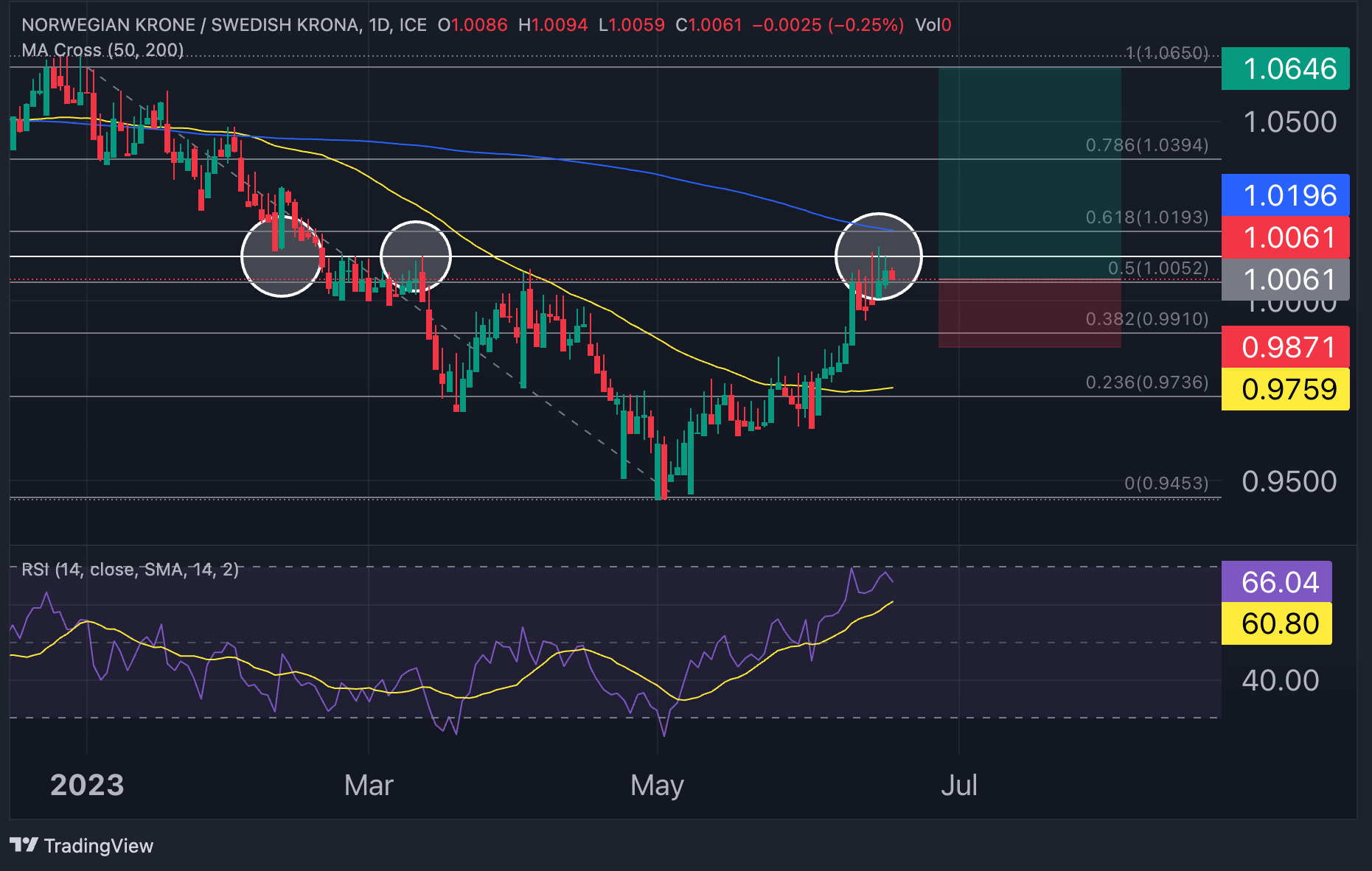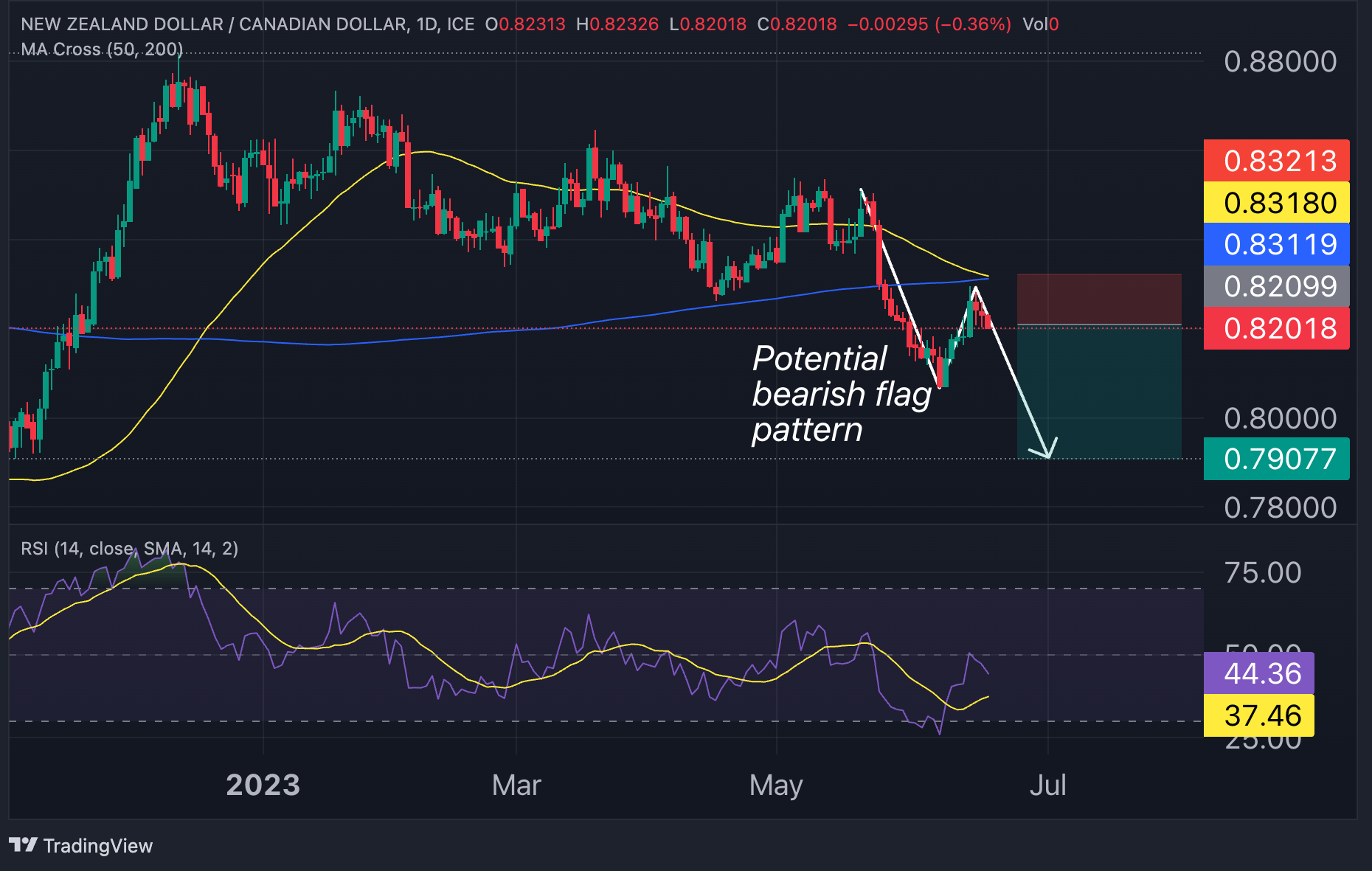Market Review: What Happened Last Week
Last week, the Federal Reserve chose to keep interest rates unchanged, pausing a 15-month cycle of rate hikes. However, in their projections, they hinted at the possibility of two more rate hikes before the year's end.
Although the markets welcomed the decision to hold rates steady, they disregarded the Fed's hawkish guidance. Federal Reserve Chair Jerome Powell's statement during the press conference about doing "whatever it takes" to bring inflation back to 2% did not have a significant impact on attracting buyers for the dollar. As a result, the dollar index (DXY) had its second worst week in 2023, falling by 1.2%. This marked the third consecutive week of losses and brought the index back to levels seen a month ago.
The decline in the value of the greenback was primarily driven by the euro and British pound. The EUR/USD pair climbed nearly 200 pips (1.8%) last week, reaching above 1.09, thanks to the European Central Bank's rate hike and indication of potential future hikes at the next meetings. The British pound had its best week since December 2022, with the GBP/USD pair rising by 240 pips (1.9%), buoyed by better-than-expected macroeconomic data and anticipation of a rate increase from the Bank of England this week.
The Japanese yen was the only major currency that weakened against the dollar, as USD/JPY gained 1.6% due to the Bank of Japan maintaining a dovish stance.
Commodity-linked and growth-linekd currencies, such as the Australian dollar (AUD), also rallied last week in response to the People's Bank of China's announcement of easing borrowing costs to stimulate the struggling economy.
Forex Market: What To Expect This Week
In the United States, the focus will be on Federal Reserve Chair Jerome Powell's appearance before Congress as part of his semiannual monetary policy report on Wednesday and Thursday.
Additionally, several speeches from Federal Reserve members, including Bullard on Tuesday, Goolsbee on Wednesday, and Bowman, Barkin, and Mester on Thursday, will provide further insights. There is a heightened risk of hawkish remarks, as a weakening dollar could be seen as a disruptive factor for maintaining tight financial conditions.
In Europe, there will also be speeches from several European Central Bank representatives throughout the week. However, the spotlight will be on Thursday when the Swiss National Bank, Norges Bank, and the Bank of England hold their respective policy meetings.
Market expectations point to a 25-basis-point rate hike at each of these meetings, although there is a slight upside risk towards a higher 50bps hike for the NB Bank and BoE.
The UK inflation print a day prior to the BoE meeting will be crucial, with the consensus expecting a slight drop from 8.7% to 8.5% year-on-year in May.
On Friday, flash June PMI (Purchasing Managers' Index) data for the Eurozone, the UK, and the US will be released.
Chart of The Week: Fed’s Rate Advantage Over ECB Is Now Shrinking

New Trades For The Week
Long CHF/JPY: Opened at 158.58; Take Profit at 171.62; Stop Loss at 152.5; Risk-reward ratio of 2.2.

The SNB policy meeting and the BoJ minutes from the April meeting are significant events for the future of the CHF/JPY.
The SNB appears to be a laggard in the rate hike cycle, and thus could surprise with a hawkish stance this week, while the JPY remains under bearish pressure due to a dormant and dovish BoJ.
Interest rate divergences between these currencies are likely to worsen as the SNB hikes and possibly signals further hikes. The yield differential between Swiss and Japanese short-term bonds continues to favor adding long CHF versus JPY.
Technically, the pair has set new all-time highs at 158.6, surpassing its previous records set in January 2015 and December 1979, and is on track for its straight six month of gains.
The Fibonacci extension of the bull run from July 2016 to June 2023 points to 171.61 as the next medium-term target. Stop loss orders could be placed at 152.5, which has been a strong support level in 2023.
Long NOK/SEK: Opened at 1.0061; Take profit at 1.0650; Stop Loss at 0.9875; Risk-reward ratio of 3.08.

The Norwegian krone is being supported by further rate hikes at Norges Bank as well as a recovery in oil and natural gas prices following China's announcement of monetary stimulus.
As a result, we believe the NOK/SEK pair has room to cut 2023 losses after falling around 11% in the first four months of 2023 and rebounding 6% since early May.
Technically, the breakout of both the 50-day moving average and the 50% retracement of the bearish trend from highs to lows in 2023 have signaled the start of a bullish trend.
The pair is currently testing a critical confluence zone in the 1.00-1.015 range, which was previously resistance in March and support in February 2023 and June 2022.
The 200-day moving average at 1.02 represents the next key hurdle for bulls.
We think a hawkish Norges Bank this week will be the catalyst for the pair to confirm its uptrend and overcome these technical resistances.
With a target of 1.0650 (2023 highs) and a stop just below 38.2% Fibonacci at 0.9875, the potential risk-reward ratio for the trade is 3.08.
Short NZD/CAD: Opened at 0.8205; Take Profit 0.79; Stop Loss 0.8320; Risk-reward ratio of 2.8

After successfully running this trade in May, it's time to re-enter short in the NZD/CAD pair.
Fundamentally, rising energy prices, both oil and natural gas, as well as the Bank of Canada's renewed hawkish stance, which unexpectedly raised interest rates this month, will likely support the Canadian dollar. The Reserve Bank of said that borrowing costs are now peaking at their current levels, implying that interest-rate differentials are shifting in favor of the CAD versus NZD.
Technically, a bearish flag is forming, which could lead to a test of November 2022 support at 0.79, while the pair failed to test the 200-day moving average last week due to fierce bearish resistance at 0.83. The RSI is once again pointing south, adding to the bearish momentum.
Stop loss could be set at 0.8320 slightly above both the 50dma and 200dma.
Open trades from past weeks:
- Long USD/MXN: Opened on June 12 at 17.30; Take Profit 18.50; Stop Loss 16.45; P&L current -1.3%.
- Short NZD/USD: Opened on June 12 at 0.6142; TP 0.59; SL 0.62.5; P&L -1.3%.
- Long CAD/CHF: Opened on June 12 at 0.6776; TP 0.7055; SL 0.6650; P&L 0%.
- Short EUR/NOK: Opened on June 5, at 11.7969; TP 11.25; SL 12; P&L +1.9%.
- Buy USD/CHF: Open on May 30, at 0.9030; TP at 0.94, SL 0.89; P&L -0.1%.
- Short XAG/USD: Opened on May 16, at $23.88; TP $22; SL $24.9; P&L -0.5%.
- Long WTI spot: Opened on May 16 at $70.8; TP $80; SL $66.3; P&L +0.3%.
- Long EUR/JPY: Opened on May 8, at 149.16, TP 160; SL 142; P&L +3.8%
To embark on a successful journey in forex trading, you must master the art of buying and selling currencies, which involves understanding market dynamics, crafting effective strategies, and diligently managing risk. Explore our detailed guide on How to Trade Forex for more insights.




